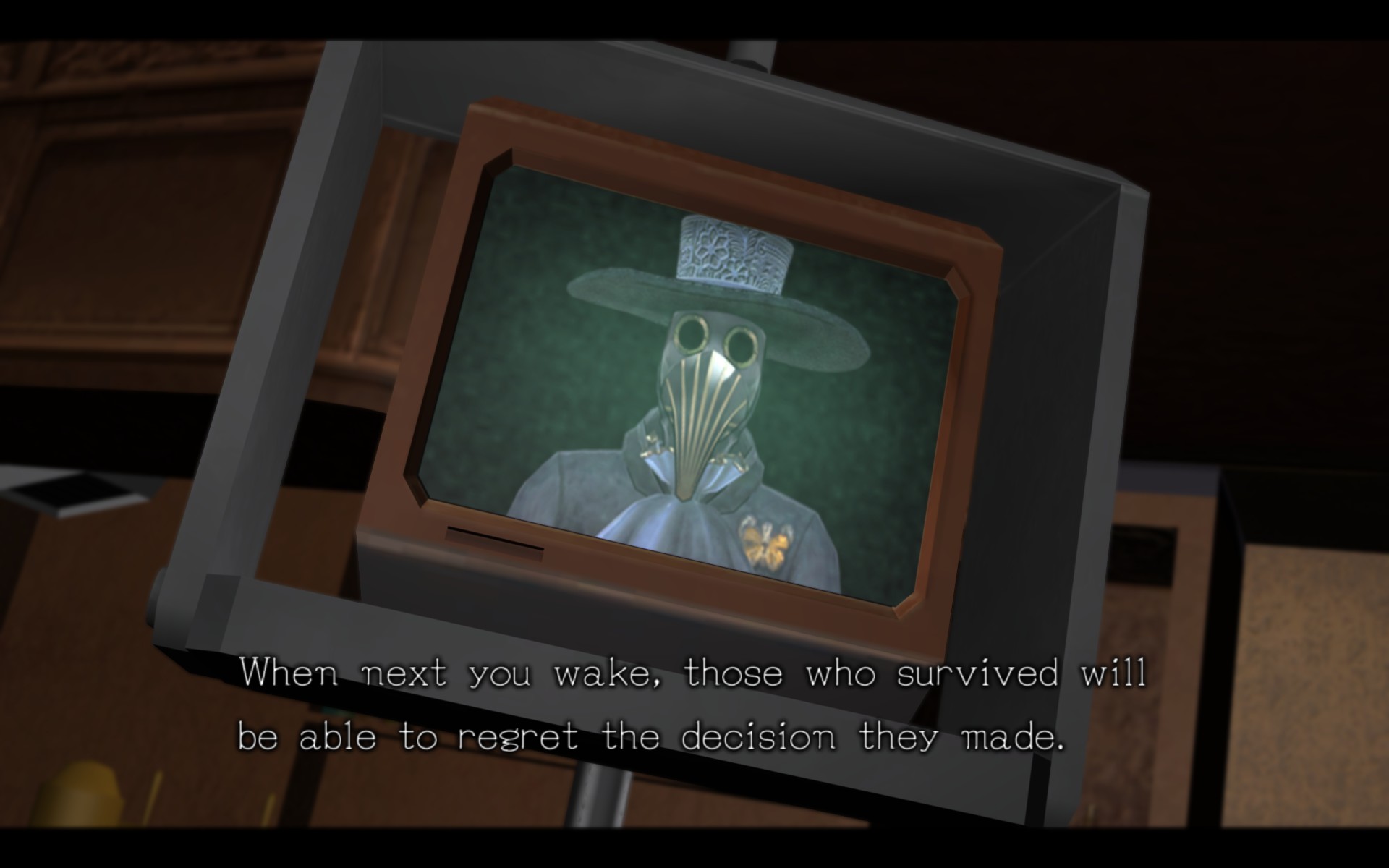Some notes on the Windows version of ‘Zero Time Dilemma’

-
As you might imagine, given that the game was primarily developed for the 3DS and Vita, the system requirements listed on Steam are overkill. I mean, 8 GB RAM? A GTX 650 or HD 7700 with 1 GB VRAM at minimum? It was almost playable in a VirtualBox instance that requires software emulation of DirectX 11! I’d guess most any computer released in the past three years, and even some older ones, should be able to run Zero Time Dilemma with few issues. Just turn down the resolution and antialiasing if you run into problems.
-
Speaking of settings, the game’s launcher is a Node.js app using the Electron framework. Seems like overkill for something that’ll only ever run on Windows, doesn’t it? Hmm.
-
There are a few UI artifacts indicating the game’s origin as a handheld console port, most visibly the mentions of hardware buttons on the menu screens. Since the 3DS supports stylus input, which translates well to a mouse, the mildly lazy conversion doesn’t hurt gameplay that much. It’s a little irritating to have to use the on-screen keyboard for puzzles that require text input, though.
-
Much hay has been made of Zero Time Dilemma’s introduction of random elements to the typical visual novel choice system, but I suspect that they’re not in fact all that random. I’d love to hear from anyone who doesn’t get the dice roll in exactly three attempts, for instance. Yeah, when you know what the odds would actually be, they sure feel awfully hopeless, but it’d be pretty stupid for the game to insist on adhering to them.
-
Did somebody say something about Miyuki Sawashiro? No? Oh. I just thought… well. Another time, maybe. clears throat
-
Really, the most jarring thing about Zero Time Dilemma, coming from the first two games in the Zero Escape series, is the shift to fully-3D cutscenes. It’s a far more demanding mode of presentation than the models of Virtue’s Last Reward, which animated a small palette of gestures and nothing else, let alone the visual novel–style 2D sprites from Nine Hours, Nine Persons, Nine Doors. Unfortunately, Zero Time Dilemma’s visuals hint that the budget wasn’t increased to match. This is especially noticeable in the PC version, where the low-resolution textures and plasticky character animations stick out like a sore thumb.
-
Which is a real shame, because Rui Tomono did a great job with reinterpreting the character designs for this final game in the trilogy. They do lose the more baroque fluorishes of Kinu Nishimura’s work from the first two installments, but that’s in keeping with the generally more subdued mood of Zero Time Dilemma. Gone are the moments of calm that housed comedic bits like Junpei’s cat-related verbal tic. It shows that Koutarou Uchikoshi has learned how to preserve the sense of urgency throughout a story. Contrast this with the interludes of chicken sandwiches and kick-the-can games in Ever17 — though the newfound seriousness can occasionally get rather suffocating.
-
Between the replacement of visual novel narration with cutscenes and the leaner plot, Zero Time Dilemma cuts a third to a half off the playtime of Virtue’s Last Reward. It’s hard not to feel a little disappointed by how the game pulls back on throwing revelations out of left field, even though it makes sense for the last game in a series like this one — especially this one — to try and wrap up all of the loose ends it’s introduced. Still, the basic framework of an Uchikoshi story hasn’t changed: you get yourself very confused, and in doing so you manage to save the lives of all of the main characters. It doesn’t even merit a spoiler warning at this point, but I’m fine with that. The journey is what counts.